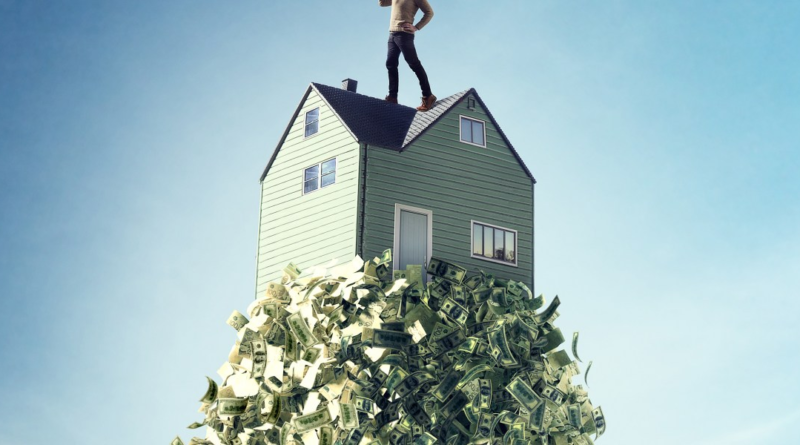Investors are scooping up 1 in 5 homes sold in the housing market and making more money than before
At the start of last year, investors pulled back; their home purchases plummeted almost 50%, according to Redfin, not too far off from existing home sales, which as we know fell to their lowest point in almost 30 years.
It was a change from their activity throughout the pandemic-fueled housing boom though. At that time, investor home purchases more than doubled. Everyone was buying homes because mortgage rates were historically low and remote work became a thing. It all changed when mortgage rates soared, and in some areas, home values declined and rents cooled—putting a dent in investors’ profits. And let’s not forget borrowing costs were much higher too.
Now, they’re back. “Investor home purchases are rising—albeit slightly—for the first time in almost two years,” according to Redfin. In a newly published analysis, Redfin found investors bought 44,000 homes in the first quarter, up half a percent from a year earlier. (Redfin defines an investor as “any institution or business that purchases residential real estate.”)
Investors bought almost 19% of homes sold in the first quarter this year, so roughly one in five homes, per Redfin. That’s fewer homes than before and throughout the pandemic, but it is the highest share in close to two years, the analysis read.
The rationale behind the return being, “with home prices and rents back on the rise and the initial shock of elevated mortgage rates in the rearview mirror, investors are easing their foot off the brake pedal,” according to Redfin. That being said, they’re making more money than they were a year ago, too. In March of this year, the typical home sold by an investor drove a slightly more than 55% return, or close to $175,000 profit. Last year, in the typical situation, an investor sold a home for more than $146,000 than they bought it for, or above 46%. Fewer investors sold at a loss too.
Redfin’s analysis found investors are buying both more expensive homes than before—and a record share of the most affordable homes in the country. “The typical home bought by investors in the first quarter cost $464,560, up 9.2% from a year earlier,” it said. “Investors purchased $31.3 billion worth of homes in the first quarter, up 6.6% year over year.”
Here’s the thing, while their purchases of more expensive homes increased the most in the first quarter, low-priced homes still represent a larger share. So low-priced homes amounted to 47.5% of investor purchases in the first quarter, but high-priced homes amounted to 28.5%, according to Redfin. And a lot of the increase in their more expensive home purchases were driven by investors’ growing presence in California. In San Francisco and San Diego, investors bought more than 23% of homes sold in the first quarter, some of the highest shares apart from cities in Florida, such as Miami and Jacksonville.
But their profit in San Francisco doesn’t compare to let’s say Philadelphia; In the former, the typical home sold by an investor sold for close to 29% more than the investor bought it for—in the latter, the typical home sold by an investor sold for slightly over 136% more than the investor bought it for.
And while investors are still buying single-family and multifamily homes, their purchases of single-family homes rose in the first quarter of the year by nearly 4%, but their multifamily purchases fell across townhouses, condos, and apartments. In this country there’s demand for single-family homes fueled by an idealization of them (consider tiny homes). Single-family homes made up close to 69% of investor purchases in the first quarter, according to Redfin, and they’ve gained market share.
The analysis found: “18.4% of U.S. single-family homes that sold in the first quarter were purchased by investors—the highest share since mid-2022. Meanwhile, the share of other property types bought by investors fell from a year earlier, to 31.9% for multifamily properties and 18.1% for both condos/co-ops and townhouses.”
However, a New Jersey-based Redfin agent said: “The balance of power between investors and regular buyers is changing.” The agent suggested that when there’s a bidding war for a home, sellers may prefer to choose the person who will actually be living there, and in some cases, individuals might actually be willing to pay more upfront than investors.
It’s not often you hear that. But as Fortune has previously reported, most estimates put ownership of institutional investors, like Blackstone and Invitation Homes, at less than 5% of single-family rentals and less than 1% of all single-family homes. So it can be hard to blame them for all the country’s housing woes. However, it is a different story when it comes to some markets, such as Atlanta, where institutional investors own more than 4% of all single-family homes, and it could be contributing to higher housing costs.
The conversation surrounding investors in the housing world is layered, but what we know is they are back after an almost two-year hiatus, and their purchases are on the rise after a short-lived slump amid an all around frozen housing market. Still, it is no match to what was experienced during the pandemic housing frenzy.



